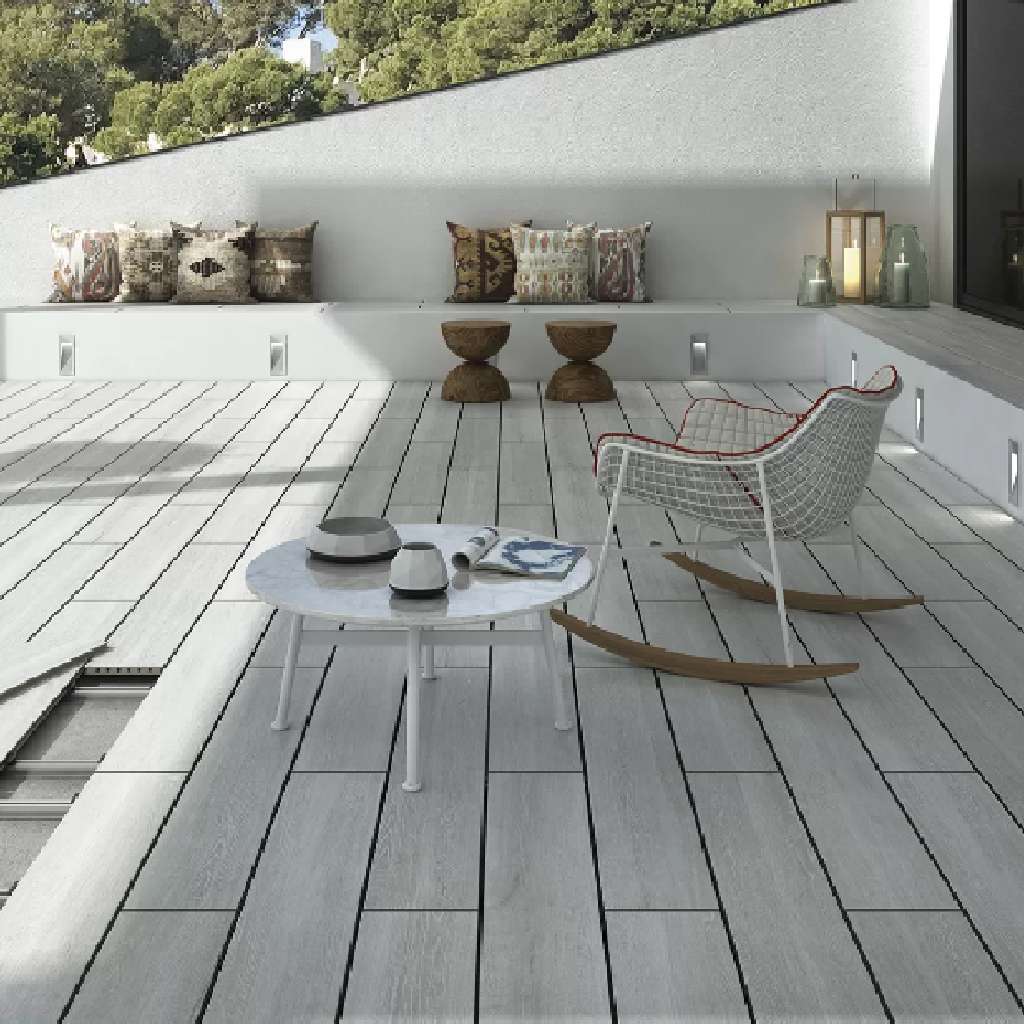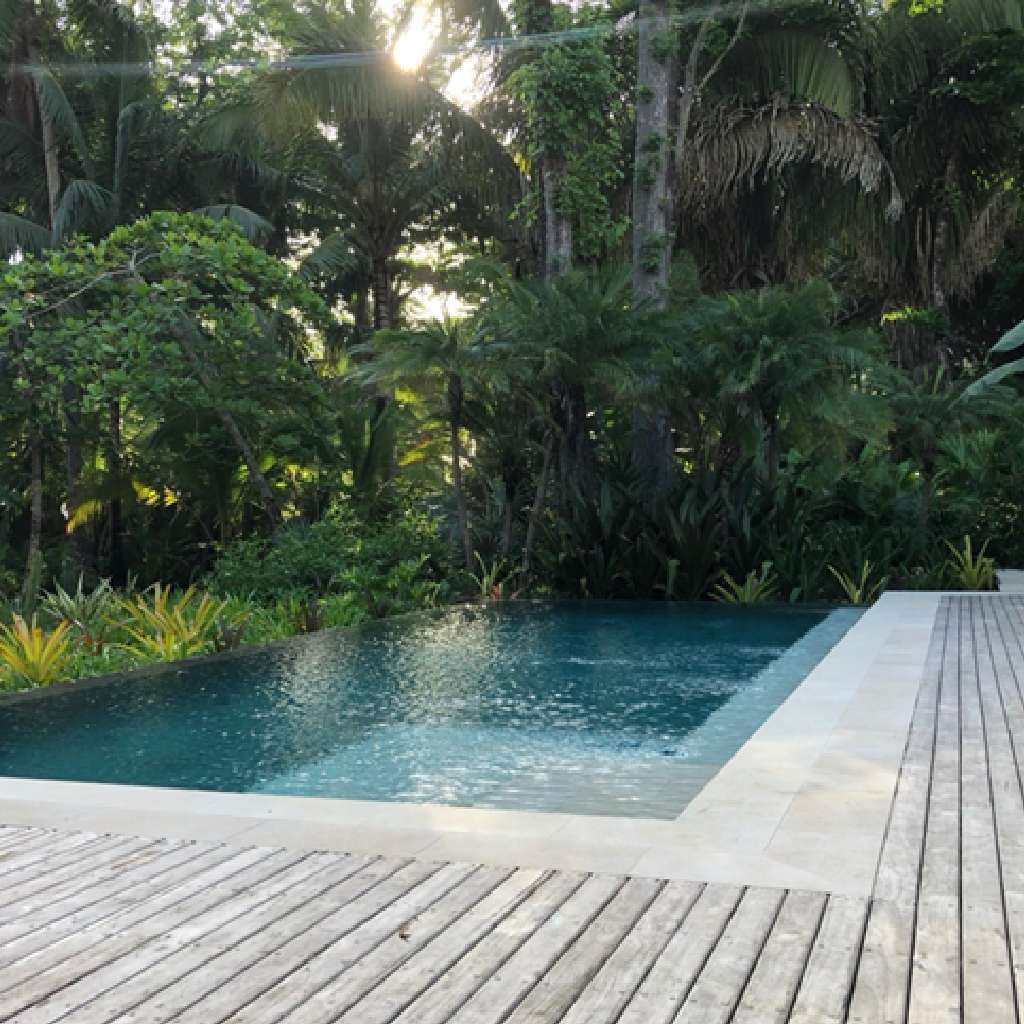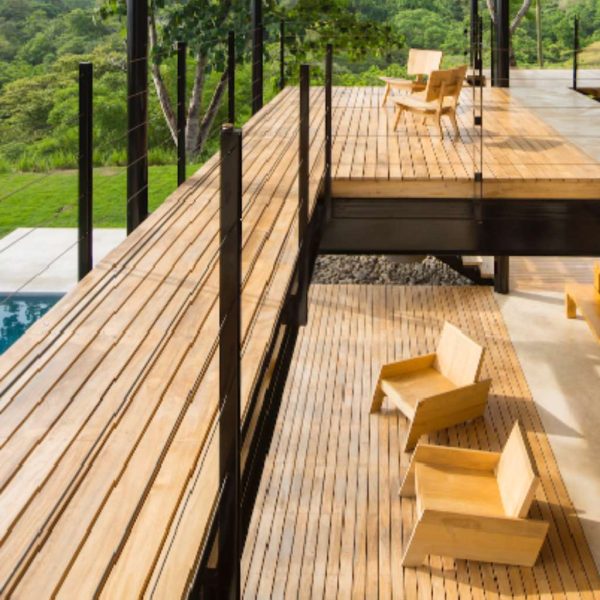The use of decks in residential and commercial projects has evolved in recent years, not only as an aesthetic element but also as a practical solution for social areas, hallways, terraces, and wet zones. The choice of the right material depends on factors such as climate exposure, maintenance, durability, and budget. Below are the main types of decks available on the market and their technical characteristics.
- Natural Wood
Natural wood has traditionally been the most widely used material. It is warm, versatile, and offers a unique finish. Thickness, width, and length can be customized, as well as edges or trims with pieces up to 12” (30 cm). In Costa Rica, the most common species are teak, melina, and almendro, sourced from certified plantations. It requires prior pest treatment, for which it is recommended to submerge the pieces in the chosen pesticide before installation. Afterwards, oil or varnish resistant to humidity and UV rays is applied. Maintenance should be performed every six months. It can be installed indoors or outdoors, fastened with top screws or hidden clips.
- Engineered Bamboo
Engineered bamboo is manufactured from bamboo fibers compressed at high density with resins and subjected to thermal treatments. It comes in pieces of 185 cm long, 14 cm wide, and 20 mm thick. It is a renewable material, highly durable, waterproof, mold- and fungus-resistant, and UV-protected. The most common colors are light walnut, dark walnut, and wenge. It is recommended for indoor and exposed outdoor areas, high-traffic social spaces, and coastal zones. It comes with up to a 25-year warranty and requires semi-annual maintenance with resealing to prevent discoloration and humidity-related degradation.
- Ceramic Deck (Exadeck)

The ceramic deck, commercially known as Exadeck, is made of extruded porcelain stoneware with a wood-like appearance. It is manufactured in pieces of 122 cm long, 14 cm wide, and 26 mm thick. It is thermostable, non-slip, and highly resistant to sun, rain, breakage, and abrasion, making it ideal for outdoor installations and high-traffic areas. It is available in seven colors: maple, oak, teak, antico, mahogany, natural, and grey. Recommended uses include indoor and exposed outdoor areas, social spaces, and coastal zones. It comes with a warranty of up to 30 years and requires minimal maintenance.
- PVC (Polyvinyl Chloride)
PVC decks are made primarily from polyvinyl chloride and additives, imitating the texture of natural wood but with greater durability and resistance to weather, water, pests, and sun. Its look and feel are less natural, and it does not allow for size customization, with edges or trims up to 8” (20 cm). It is available in shades of gray, brown, and sand. This material is resistant to water, UV rays, and stains, but may present premature discoloration and unexpected contraction. Its warranty ranges between 10 and 20 years depending on the manufacturer. It is recommended for pools, jacuzzis, and coastal areas, though exposure to direct sunlight should be considered. It is not very suitable for interiors due to its artificial appearance.
- WPC (Wood Plastic Composite)

WPC is a composite of wood fibers and recycled polymers. Its sizes are not customizable and, like PVC, it allows trims up to 8” (20 cm). It is resistant to humidity, insects, and UV rays, although its appearance and texture are also less natural. The most common colors are gray, brown, walnut, and teak. It requires low maintenance, but it can heat up under the sun and show premature discoloration or contraction. Its warranty ranges from 10 to 20 years. It is recommended for shaded outdoor areas, high-traffic social spaces, and coastal zones, but less so for interiors where wood authenticity is desired.
In conclusion, there is no “one-size-fits-all” material for decks. The selection depends on location, intended use, and the desired aesthetic. While wood provides warmth and tradition, PVC and WPC ensure durability in outdoor conditions; bamboo contributes sustainability, and ceramic offers maximum resistance. Choosing the right option means balancing technical performance, design, and long-term maintenance.
